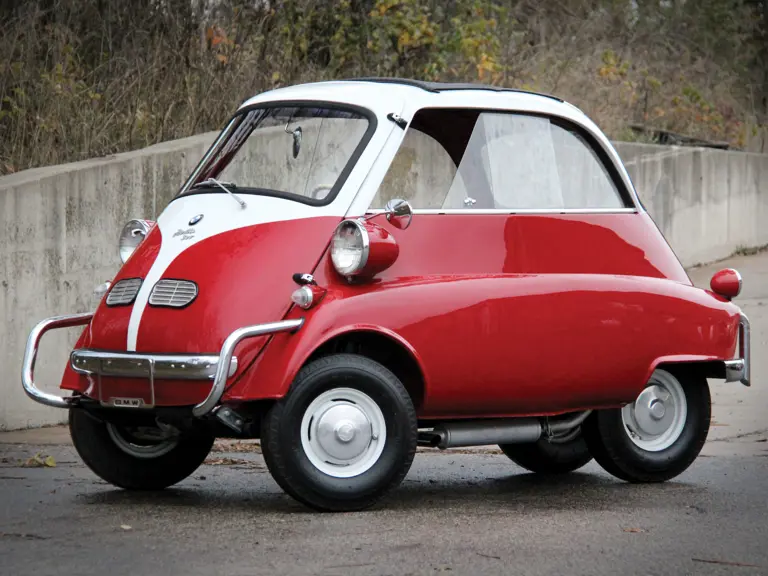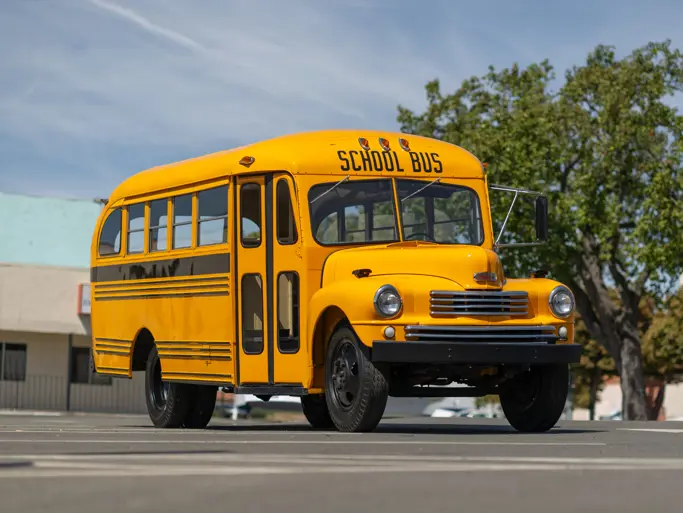The BMW Isetta is widely recognized as the world’s most popular microcar. While small in size, they have garnered a dedicated international following and this fine example is presented in excellent condition. The Isetta recently received a complete nut-and-bolt rotisserie restoration. It is handsomely finished in the desirable two-tone color combination of red and white with a gray interior, and its undercarriage is in keeping with the tidy overall presentation. The front-entry provides unique access to the 750-pound platform. It is powered by a 298-cc, 13-hp L-head single-cylinder engine that is coupled to a four-speed manual transmission. This is a fun car to drive and it opens up with a sliding sunroof and side windows. The Isetta is commonly referred to as the car that saved BMW.
Renzo Rivolta was an early adopter of the inventive bubble car style in 1953. The Iso refrigerator magnate created an odd four-wheeled, two-seat Isetta that was powered by a 236-cc, two-stroke twin-cylinder engine. The car was cute and quirky, with a steering wheel that hinged outwards with the front-opening door (similar to a refrigerator, naturally).
In 1954, Rivolta sold the whole works – tooling and all –to BMW, who was looking for an economical car with mass appeal to combat the company’s bleak financial picture. Out went the two-stroke twin and in went a 250-cc motorcycle engine. In 1956, the first full year of production, BMW sold 22,000 Isettas. Encouraged by the results, the engine was bumped up to a 297-cc four-stroke single, which turned the car into reliable transportation that was capable of 50-mpg at 50-mph. By 1962, BMW had built 161,728 Isettas, with 41,000 more constructed under license in other countries. BMW soon altered the window arrangement to permit sliding side windows and reduce the goldfish bowl effect of sunshine.
Originally designed with rear wheels 20-inches apart to obviate the need for a differential, tax laws in various countries gave a break to a three-wheeled version, and sales of those units predictably soared. British-built Isettas added a pickup version and a full convertible. All Isettas have a sliding sunroof, supposedly so occupants could get out if the front door jammed. Most Isettas are left-hand drive, as moving the wheel to the right side meant that driver and engine were on the same side of the car, impractically necessitating ballast on the left.
Urban practicality and concerns about the price of gas – plus the cute quotient – has made the Isetta a somewhat recent darling. The Isetta remains a fundamentally sound design, and looks especially attractive in the two-tone color combinations. Unsurprisingly, Isettas must be considered the unlikeliest Mille Miglia entrant, competing twice, in 1954 and 1955, so add event eligibility to the car’s list of attributes



 | Fort Lauderdale, Florida
| Fort Lauderdale, Florida


